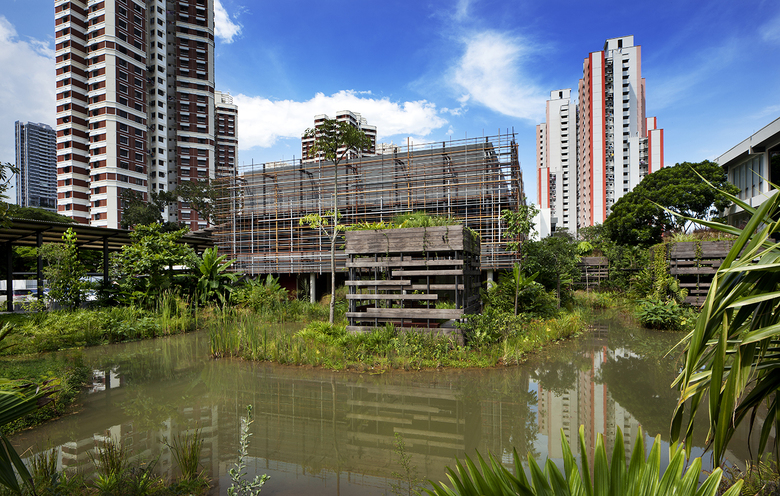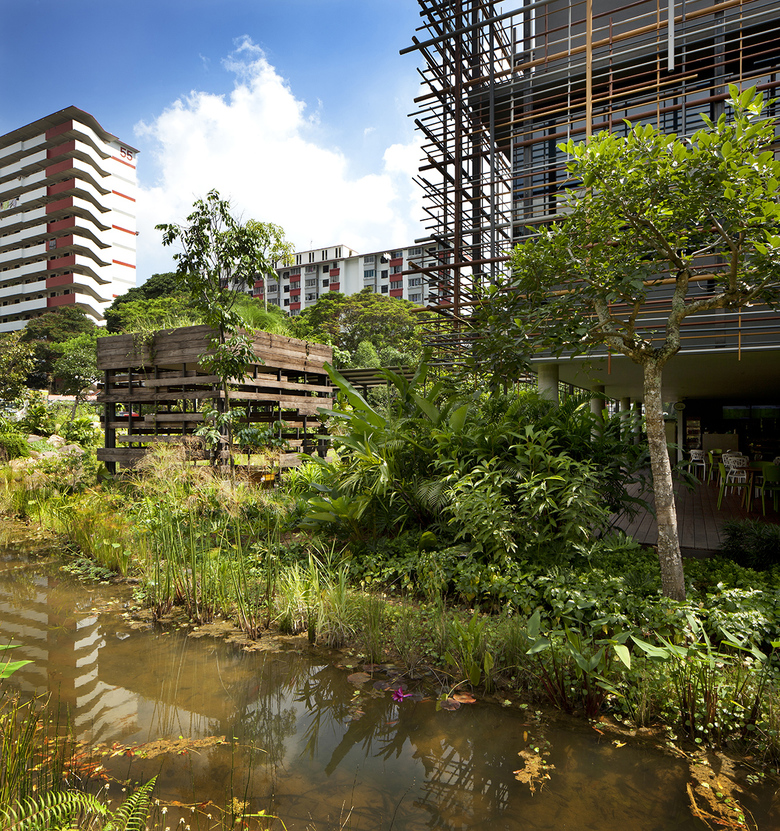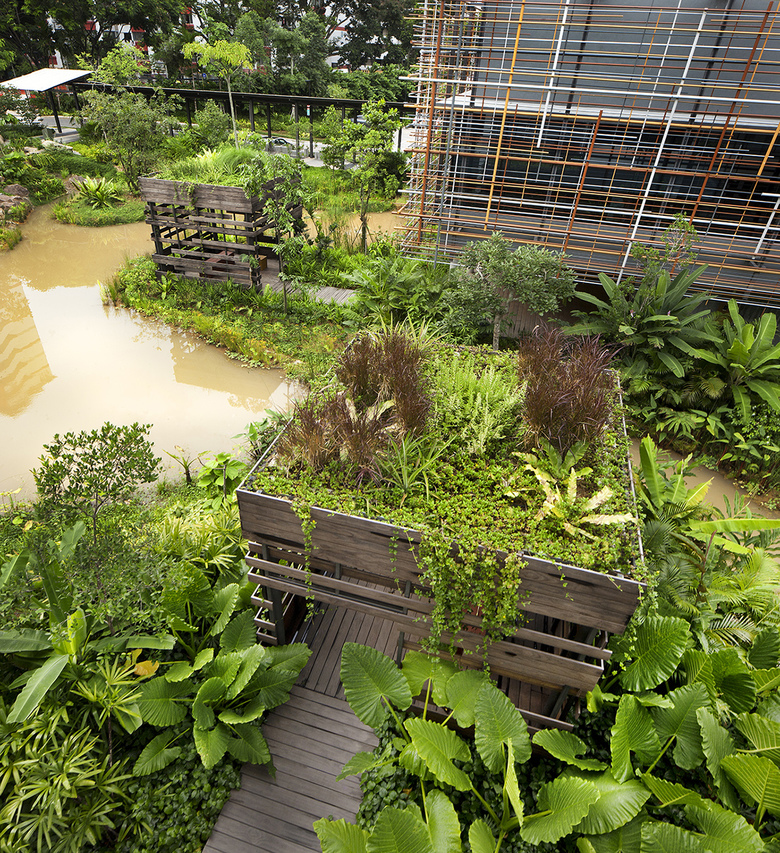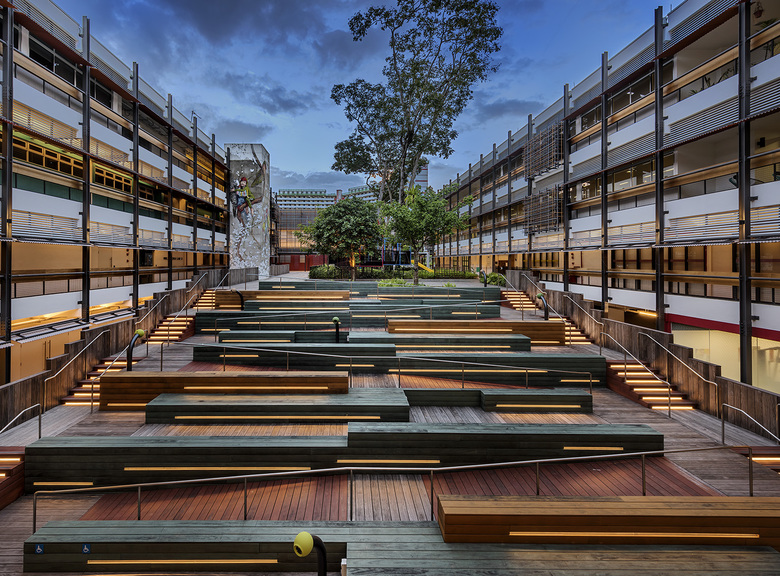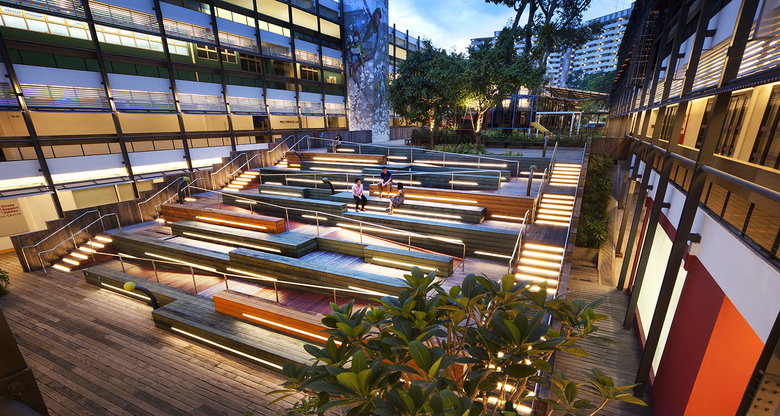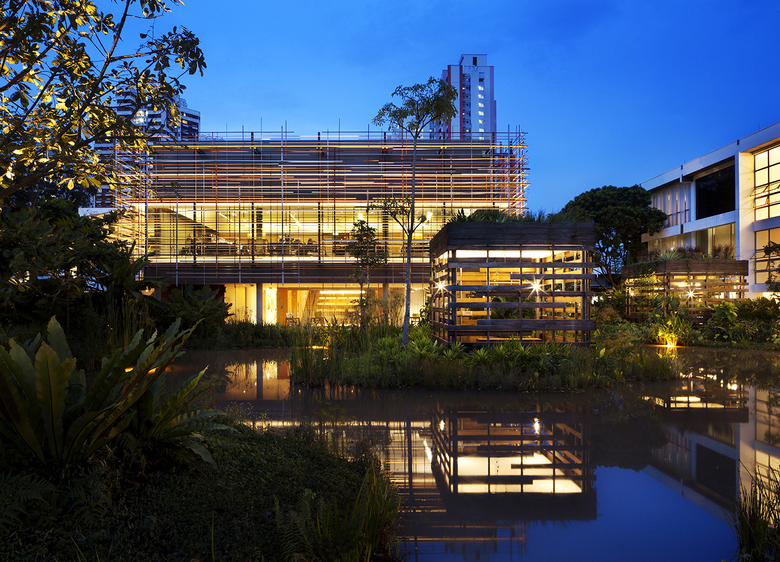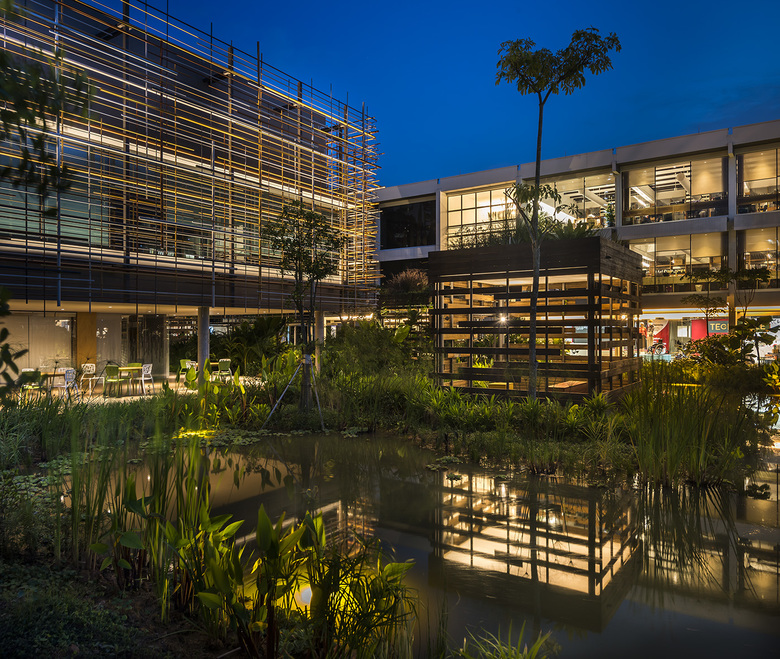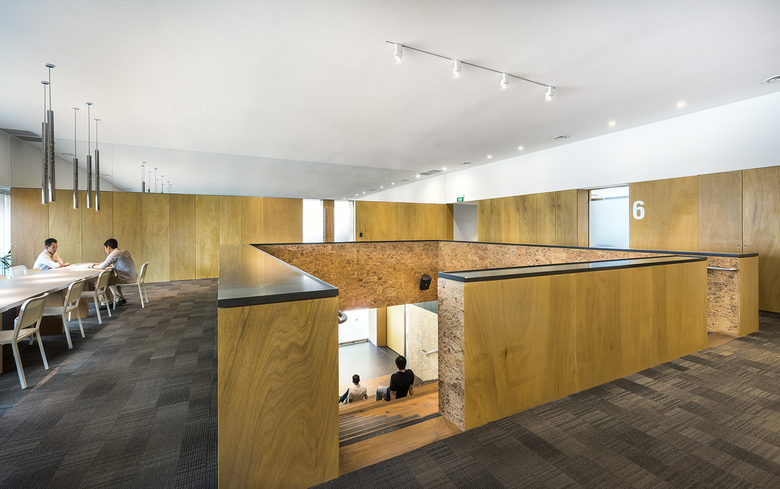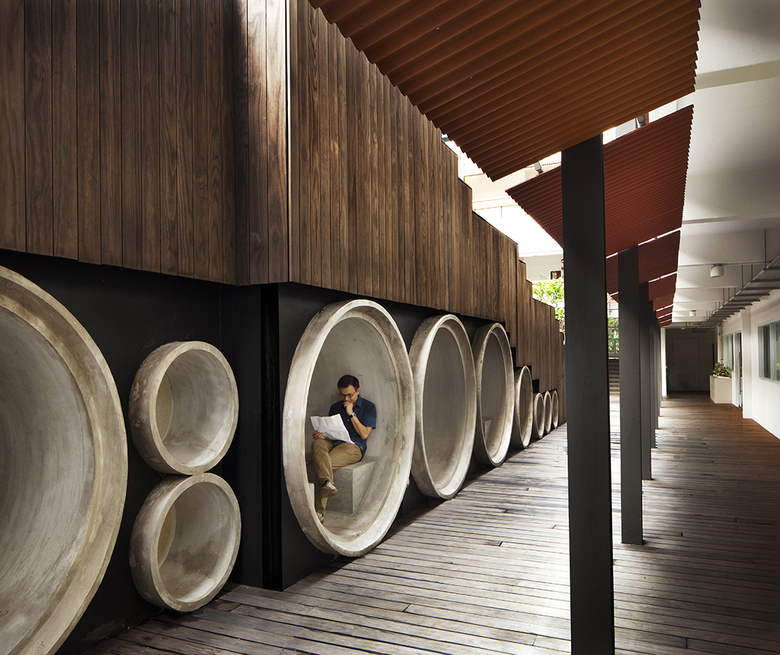Enabling Village
Singapore, Singapore
Located in Redhill, the project is a demonstration of heartland rejuvenation and community building, through Masterplanning and the adaptive reuse of Bukit Merah Vocational Institute built in the 1970s. The property was re-purposed as the Enabling Village - an inclusive space that integrates education, work, training, retail and lifestyle, connecting people with disabilities and the society.
Before re-development, the property did not contribute to the neighbourhood. The Masterplan re-imagines the Enabling Village as a park/garden destination, and is designed as an integral part of the neighbourhood's pedestrian network.
The design scope includes architecture, interior design, signage, lighting, art and landscaping to deliver a holistically integrated environment. The buildings are re-named as "Nest", "Playground", "Village Green", "Hive", "Hub" and "Academy" - based on their characters and programmes. These are seamlessly connected by ramps, landings and lifts.
The new Nest building is anchored at the main pond and serves as a beacon, drawing pedestrian flow through the new linkways. The architectural expression and finishes are continued at the existing buildings as facade, canopies and surfaces. A timber terrace is laid over the courtyard at the Playground, stepping down as an amphitheatre with integrated ramps. The terrace continues under and past the building as a balcony overlooking activity islands and as a garden trail connecting to the adjacent housing precinct. Pre-cast concrete pipes are inserted below the amphitheatre as resting nooks. The open space between the Village Green and the Hive is reactivated as a garden yard with re-purposed sea containers as bridges, follies and meeting rooms loosely scattered with recycled oil drum planters. 'Up-cycling' continues as interior design features in the Art Faculty and Hive.
Wayfinding is developed as a series of touch-points at entries and strategic junctions to assist with orientation and navigation. Each building is identified by a feature wall with coloured graphics. External lighting is designed to give a serene park ambience. Building facades, drop-offs, cabanas and walkways are accentuated as beacons and connectors in the park. Art is integrated into the garden with building-scale murals, incorporating artwork by autistic artists.
Landscaping and water gardens are designed with a variety of native species, scales and colours, complementing the conserved trees to attract biodiversity and support ecosystems. Verandahs and cabanas extend out from passages as outdoor meeting spaces, bringing nature closer to people.
The Enabling Village champions sustainability and sociability by promoting the learning, bonding and healing of people with varying abilities within a biophilic environment. This creates an inclusive space that enables and values everyone.
